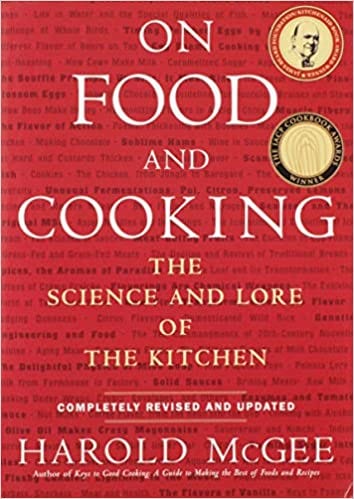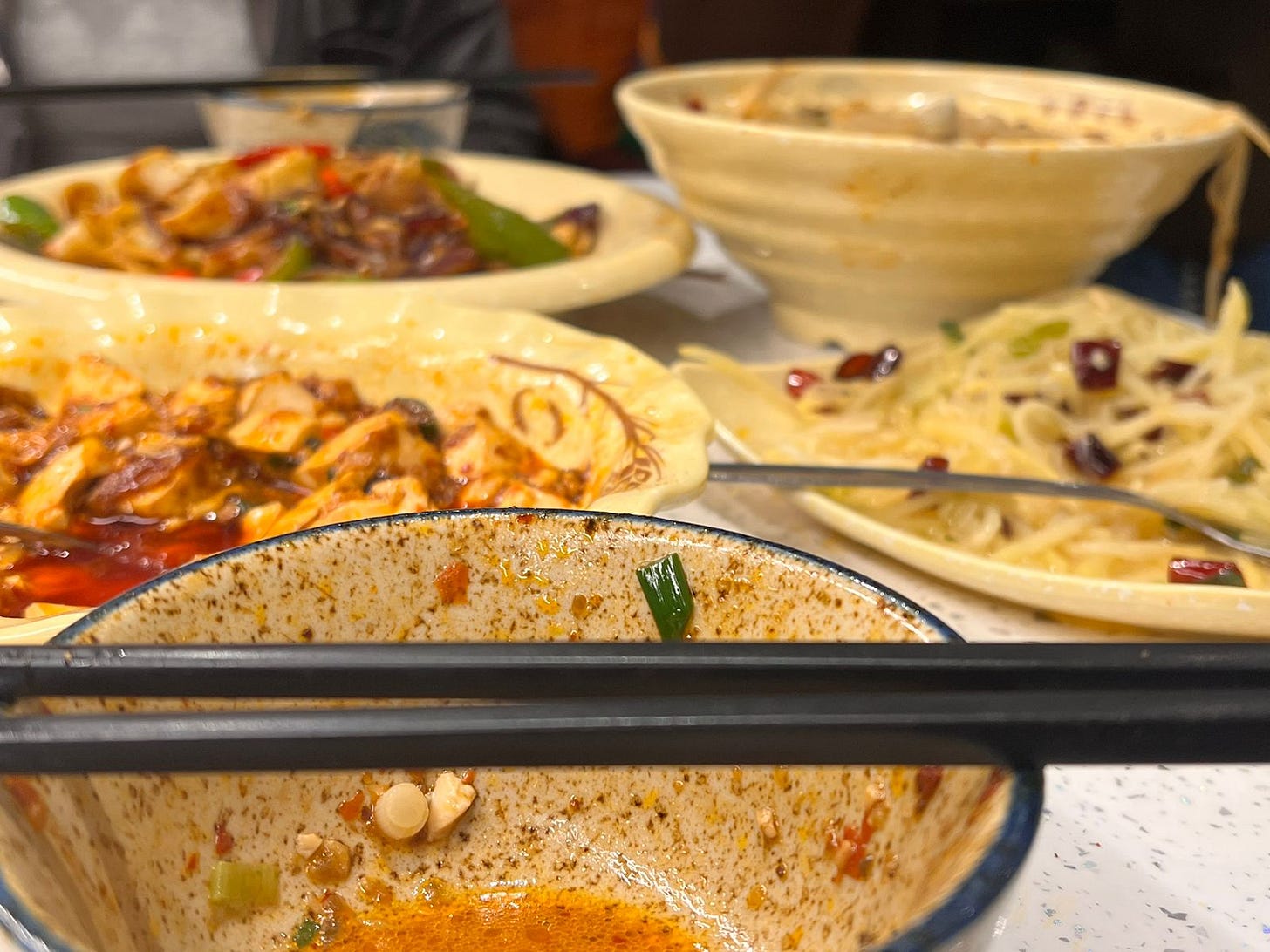My mother was an early recycler. All her life she collected yogurt pots, first in glass then later in the plastic that supplanted them. Well, not all her life, obviously (hacks seldom miss an opportunity to exaggerate), but as soon as yogurt appeared on the initially-suspicious but quickly won-over British market.
She would wash them out and scrape into them all the family lunch and supper leftovers, none ever generous enough to turn into another meal but positively not to be discarded until they had grown a blue velvet pelt. Every time I went to visit, I would wait till she wasn't looking and fill a plastic bag with them to sneak out to the bin before they overwhelmed every cupboard in the kitchen. I barely kept pace.
It was a habit I never copied. Except clearly I did, just not with yogurt pots. When I opened the fridge yesterday, there were six saucers with no more than a spoonful or two of leftovers mounded onto their middle shallows and covered with the shower caps I pinch from hotels for the purpose.
Hers was a wartime and post-war habit. (How many people know that British rationing only came to an end in 1954? Or, while we're on it, that Britain's debt to the US for the rent of their trains and equipment during World War II was only paid off on Friday, 29 December 2006, with a final transfer to the US Treasury of £43 million - $84 million at the time, the sum still outstanding from the UK and Commonwealth’s original debt of $4.34 billion for the Brits to defeat Hitler's Nazi Germany?)
My own habit was a result of four years in the Soviet Union, where nothing of any kind could be wasted. When you left the apartment of your foreigners-only compound before sunrise, you would see Russian women standing in rubber boots in the inky darkness inside the parking lot dumpster, shaking the garbage out of plastic bin bags not available in the USSR, to take them home to re-use or sell.
The real treasures, bitterly fought over inside the stinking mounds of trash, were the plastic shopping bags in which foreigners had ferried back overseas treats. Labelled everything from 'Duty Free' to 'Sainsburys', 'Boots', 'Macys', 'Carrefour', and the high-street brands of every nation, these would be carefully washed out and dried, to be paraded on an arm down the city’s streets as proudly as if they were a Prada handbag.
Leftovers reveal the skill and imagination of the cook. I suspect frittatas may have begun as a platform for leftovers. Possibly quiches, too. (Speaking of which, King Charles's Coronation Quiche? What's that about? I thought Brexit meant a rejection of everything European. And spinach, cheese, broad beans/fava beans and...tarragon? Isn't it just a cheese-and-spinach flan with, um, broad beans and tarragon?
The point of the Queen's Coronation Chicken recipe was that its flavourings of curry powder and mango chutney represented the Commonwealth. This Coronation Quiche represents Friday night at a Wetherspoons with the missus and a pint of Stella.)
Traditional Shepherds Pie (King Charles’ Coronation Quiche has been described as ‘traditional’ although it’s just been invented) is no more than left-over Sunday roast minced up and smothered in mashed potato, not so different from rissoles - which my predictive text keeps wanting to change to 'insoles'. (You would have to have grandparents older than 50 to know what rissoles are - little patties of ground cooked meat and mashed potatoes rolled in breadcrumbs and fried.) Bread-and-butter pudding and French Toast, known in France as 'pain perdu'- lost bread - are solutions for a stale loaf. Cheese soufflé is a luxurious way to use up blueing lumps of Cheddar and Comté.

But given so many of us now so often eat courtesy of the over-ordering by family committee of a menu provided by a delivery service app, what to do with the left-overs of, say, a Thai feast? An Indonesian one? There's never enough in each different carton to cater a second meal but always too much in total to chuck in the bin.
Then there’s that food we eat between meals which sates us enough so that when we sit down to proper food, we’ve cut the edge off our appetites and throw half our proper meal away. Such seductive temptations please the processed food world that designs them no end, needing us to guzzle their long-shelf-life food in preference to the fresh food of farmers and producers over whom they have little financial and political influence. Big Food Biz pays science research departments enormous sums of money to come up with distractions we seem unable to resist like Haggis & Black Pepper Chips, spray cheese, Salted Chocolate Chickpeas, Marmite-flavoured hot cross buns, and Garlic Chocolate. Which of those are really necessary or key to our health?
Potato chips officially top the list of food we don't need but crave, to the point of spoiling our appetites for a properly cooked meal. It's their salt and fat content. Studies have shown that eating salt triggers the release of dopamine, a chemical messenger that controls your brain's pleasure centre. Once it gets that first reward hit, your brain starts craving more. Fat gives food umami - that 'in the mouth' feel that makes food more satisfying.
In one study, researchers let rats choose from three different foods: their standard feed, a mix of fat and carbohydrates, or potato chips. The rodents preferred potato chips over the other two options by a long margin.
And in the field of potato chips/crisps there are sophisticated differences, the primary one between regular chips and the more addictive and more expensive kettle chips. It lies in the processing method. Regular chips are cooked in a continual process whereas kettle chips are processed in batches.
Harold McGee in On Food and Cooking explains that the batch method gives the kettle potato chip a different texture. When a new batch of potatoes is added to the oil, its temperature drops so the potatoes take slightly longer to cook. This gives their starch more time to absorb moisture and dissolve before the potato finishes frying. This way, the chip, of a thicker and more robust slice, develops a caramelised flavour. Regular and thinner chips are cooked by the traditional continuous processing method in which the oil temperature is maintained at a high level so that the potato’s moisture evaporates immediately, making the chip light and crispy and more fragile.
It’s hard to fight these dedicated attempts to make us make us buy tempting treats we don't need, so we should respect the nutritious fresh food we buy and cook and waste none of it, and give leftovers a second chance.
The same applies to feasts we pick off delivery menus or over-order in restaurants. But how not to waste the leftovers of those?
The remains of a European feast might turn into a sauce for pasta. Or a filling for a tart. Or Coronation quiche, ho ho. But a South East Asian banquet? How to turn one of those into a mouthwatering Round Two? Natalia Antelava, an accomplished cook and the co-founder of Codastory.com, a news website whose mission is to dig deep into global crises and keep the stories going after the sound-biters have moved on, passed on this genius solution from our mutual friend, another extraordinarily accomplished cook who puts me right off my stroke and who we privately call Hot Rachel because she is. (Women are free to say that about each other.)
Apparently, Hot Rachel takes all the left-overs from exotic take-out cartons, chops them up, slings them in a saucepan and pours over them coconut milk, and stock if the consistency needs thinning, and turns them into a zingy soup. Depending what the leftovers were, finely sliced scallions or cucumber might be added just before the soup is served, or cooked glass, rice or egg noodles if those weren't in the chop. The possibilities are endless. Just don't make so much of it that it generates its own leftovers.
This is Natalia and my Sichuan restaurant feast whose left-overs generated several doggie bags: Smacked cucumber with sesame paste and chilli oil, PoPo’s Ma Po Tofu with pork mince, Egg fried rice, Stir fried potato slivers with Sichuan pepper, PoPo’s fresh-made flat noodles with cumin lamb, and a couple of other dishes, but to nominate them would just expose the extensive nature of our greed. The Hand-made Wontons in chili oil didn’t make it because we ate them all the moment they were served. And ordered another portion.
Chopped à la Hot Rachel and drowned in coconut milk, what was left of the feast turned into a fabulous soup that prevented the remains being scraped into the garbage can.








Sichuan Popo! 🤤🤤🤤
Great stuff!